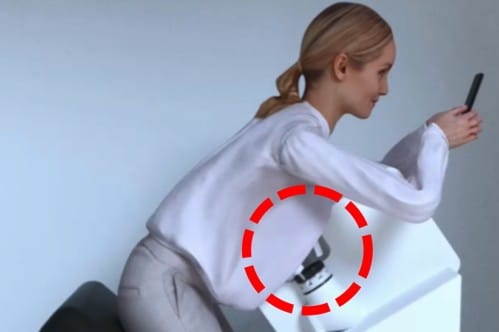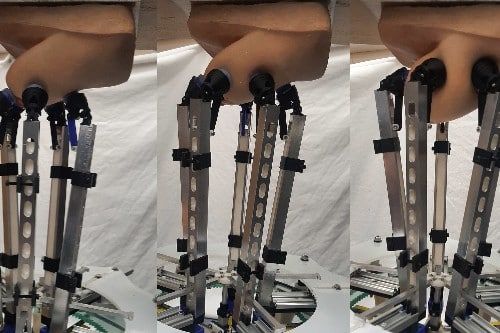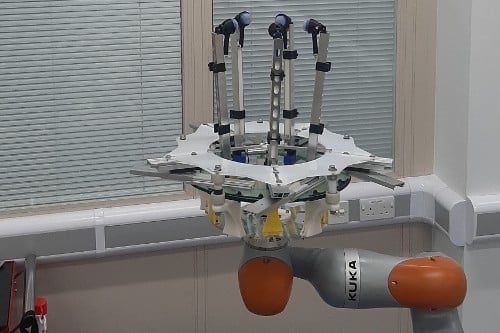A team from the University of Bristol has created a particular device at the Bristol Robotics Lab. Like a human examiner, it can push gently and find lumps deep inside. This device might change how women check their breasts. It can be put in places like pharmacies and clinics to give accurate results.
In medical exams, like Clinical Breast Examinations (CBE), being precise and accurate is essential for helping patients. People have developed automatic and semi-automatic devices to improve these exams, especially in tricky situations like surgery.

Dr. Antonia Tzemanaki from Bristol Robotics Lab led a team of both graduate and undergraduate students. George Jenkinson, the primary author, said, “Some people have different opinions about how helpful CBEs are for people’s health.”
Most people agree that if done right, Clinical Breast Examinations (CBEs) can be very helpful and safe for diagnosing problems.
In the past, some tried using technology to improve CBEs by using robots or electronic devices to feel breast tissue. But with recent advances in technology, there is a chance to improve this even more.
The team made their particular machine using 3D printing and computer-controlled techniques. They tested it in two ways: first, using a fake silicone breast and its digital twin modeled after a volunteer. Then, they did lots of tests with these fake breasts, like using different numbers of sensors. In the lab, they also did experiments on the natural silicone breast to ensure the tests were correct and to see how much pressure the real machine needed.

George added: “We hope that the research can contribute to and complement the arsenal of techniques used to diagnose breast cancer and generate a large amount of associated data that may be useful in identifying prominent scale trends that could help diagnose breast cancer early.
“One advantage that some doctors have mentioned anecdotally is that this could provide a low-risk way to record health data objectively. This could be used, for example, to compare successive examinations more easily or as part of the information packet sent to a specialist if a patient is referred for further examination.”
The next step for the team is to combine what they’ve learned from professionals about Clinical Breast Examinations (CBE) with AI. They’ll add sensors to their machine to see if it can spot possible cancer risks effectively.
The ultimate goal is for the device and sensors to be better at finding lumps than a human touch alone. It could also be used alongside other methods like ultrasound.

George said, “We’ve done the basic work, and we hope our robot can help diagnose cancers early.”
The development of this innovative robot represents a significant step toward improving the early diagnosis of breast cancer. Its potential to enhance the precision of CBEs and make them more accessible could profoundly impact breast health monitoring and timely detection of breast cancer, ultimately improving patient outcomes.
A robotic Radial palpation mechanism for breast examination (IRIS)’ by George Jenkinson et al., presented at the RO-MAN conference.
